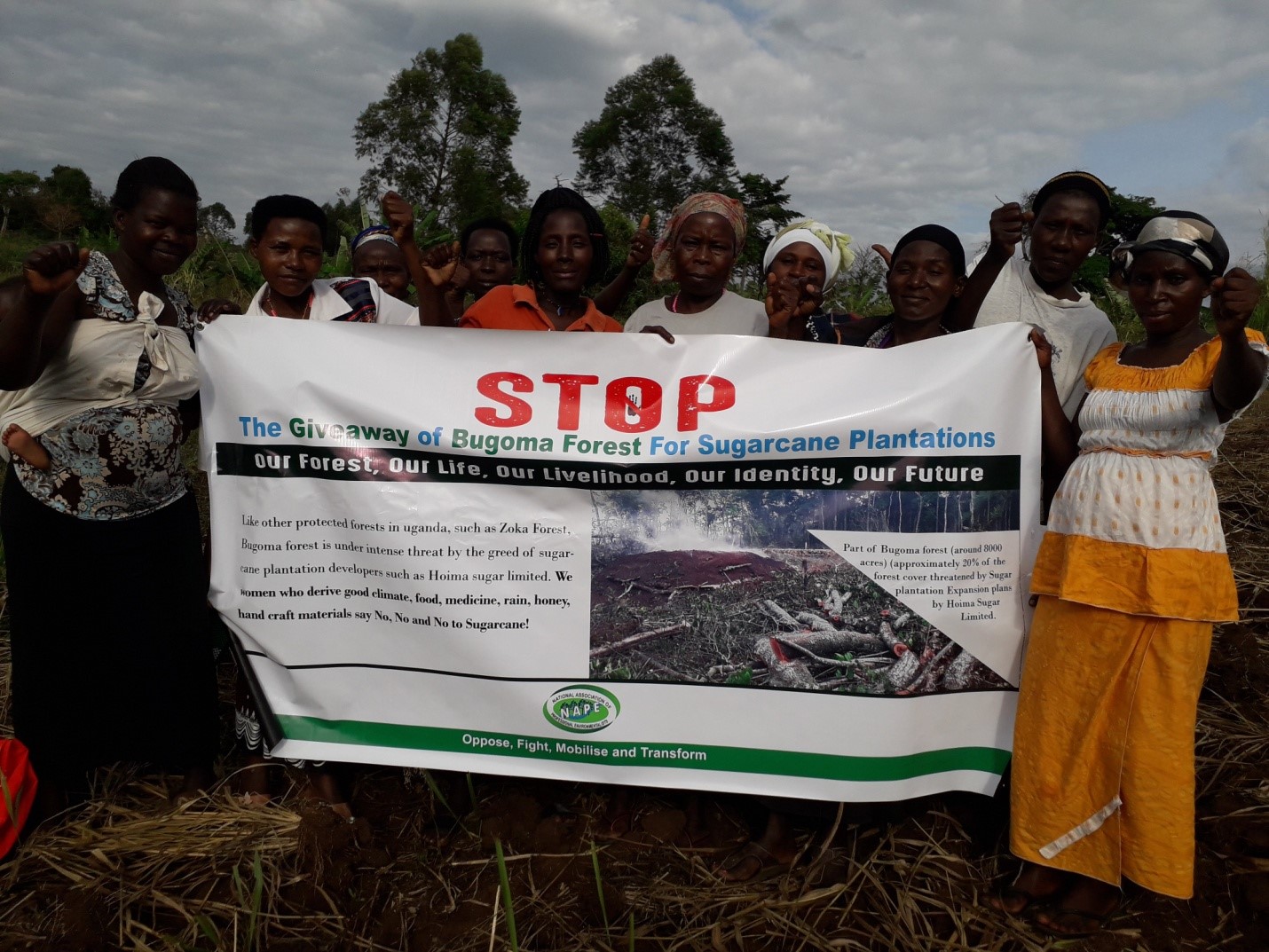Wednesday, January 31st, 2024 | By

While she was growing up, Vastina Tumwebaze’s major source of water for domestic use was Kanywabarogo riverline stream. The 60-year-old resident of Kigaaaga B cell in Kabaale sub county, located in the neighborhood of the Uganda’s oil refinery land and Kabaale International airport, in Hoima district narrates that the stream had very clean water flowing from Wambyabya forest to Bugoma central forest reserve.
But the major challenge was that the stream was being used by domestic animals as well. So government constructed protected water sources within the community to improve on water hygiene and the quality of water sources.
“When Kigaaga primary school was constructed in 1996, the government and other well wishers constructed a spring well which we nicknamed Enda Etahurra Bigambo to serve the school children and the neighboring communities. About 5 more water sources have since been constructed as the population grows,” she explains.
However, Tumwebaze says currently that the water sources have started drying up attributing it to oil and gas extractive activities which have escalated massive environmental destruction.
“Two wells including Enda Etahurra Bigambo have dried up completely and for others, it takes like an hour to fill a jerrycan because the water drips. For Kanywabarogo river line, the water levels have reduced. This problem started happening when they started constructing the oil roads and cutting down trees,” said Tumwebaze
Joram Basiima, one of the residents affected by the construction of Kiziranfumbi-Kabaale oil road also shares the same story.
“During wet season, I would hear water in my pit latrine but that stopped when they constructed the road that left me meters high,” he said.
The 25.7km Kabaale-Kizirafumbi road is among the critical roads which have been constructed by Uganda National Roads Authority to facilitate the production of petroleum in the Albertine Graben.
According to Basiima, the few existing water sources have been put on pressure by the influx of people in the area since it is near Uganda’s source of the East African Crude Oil Pipeline, the international airport and the oil refinery. He says this has forced people to trek long distances in search of water.
Experts warn of looming scarcity
According to a report quoted by The Daily Monitor on August 17, 2023, a rapidly growing population and expanding human and industrial activities have led to significant strain on both underground and surface water sources in the Albertine Graben.
The report conducted in 2023 by Zutari, a firm contracted by the Ministry of Water and Environment predicts that by 2040, certain sub-zones in the region will have deficits in both underground water and surface water. The paper quotes Dr. Seith Mugume saying, “The aggregate demand for water is projected to surge to 6.55 million cubic metres per day by 2040 due to population growth and other factors. The emergence of oil activities has further intensified the demand for ground water which, during the peak, is 43,000 cubic metres per day.”
The report further says that the heightened demand coupled with environmental degradation is expected to lead to balance deficits.
Community putting up a fight
To combat the challenge, the affected communities have started to conserve the environment and protect threatened water bodies.
The women in Hoima district are leading campaigns against Bugoma forest give away for sugarcane growing and taking actions to plant trees along the deforested areas.
“Bugoma forest, which we believe to be the source of water in area, has been given away for sugarcane growing. This mean as communities we should not sit and watch. We are fighting back,” said Mbabazi Adah one of the community activists under The Save Bugoma Forest Campaign.
A group of women in Kigaaga organized under Kigaaga Oil Refinery Women Development Association (KORECWODA) say they have stepped up efforts to plant indigenous trees to conserve the environment and ensure sustainable agriculture ahead of oil boom.
Penina Ruhindi, the group chairperson says the group is engaged in raising and distributing indigenous tree seedlings to communities; and also monitor and supervise those who receive the seedlings so that they can be planted.
“Over 2,000 indigenous trees have so far been planted and distributed,” she adds.
Peninah Ruhindi, the chairperson of KORECWODA says they have also started a campaign to plant trees along river lines and protected water sources.
“We are encouraging more people to plant trees as we lead by example. We have planted along Kanywabarogo river line and also on two protected springs that are still surviving,” she explains.
Joram Basiima, the Community Educator in Kigaaga who is also the chairperson of Kigaaga Community Radio listeners club says they are reinforcing lessons from Community Green radio to ensure natural resource management by increasing forest cover and sustainable agriculture by planting indigenous trees which encourage agro-forestry.
“Community Green radio has also contributed a lot in creating awareness about environmental issues which has prompted communities to practice activities like tree planting,” he says
With support from National Association of Professional Environmentalists (NAPE), community members are raising indigenous tree seedlings to conserve the environment. NAPE is also among the players of Save Bugoma Forest Campaign aimed at stopping the destruction of Bugoma central forest reserve in Hoima district.
Copyright ©2024 Community Green Radio . All Rights Reserved. Designed : Lwegatech